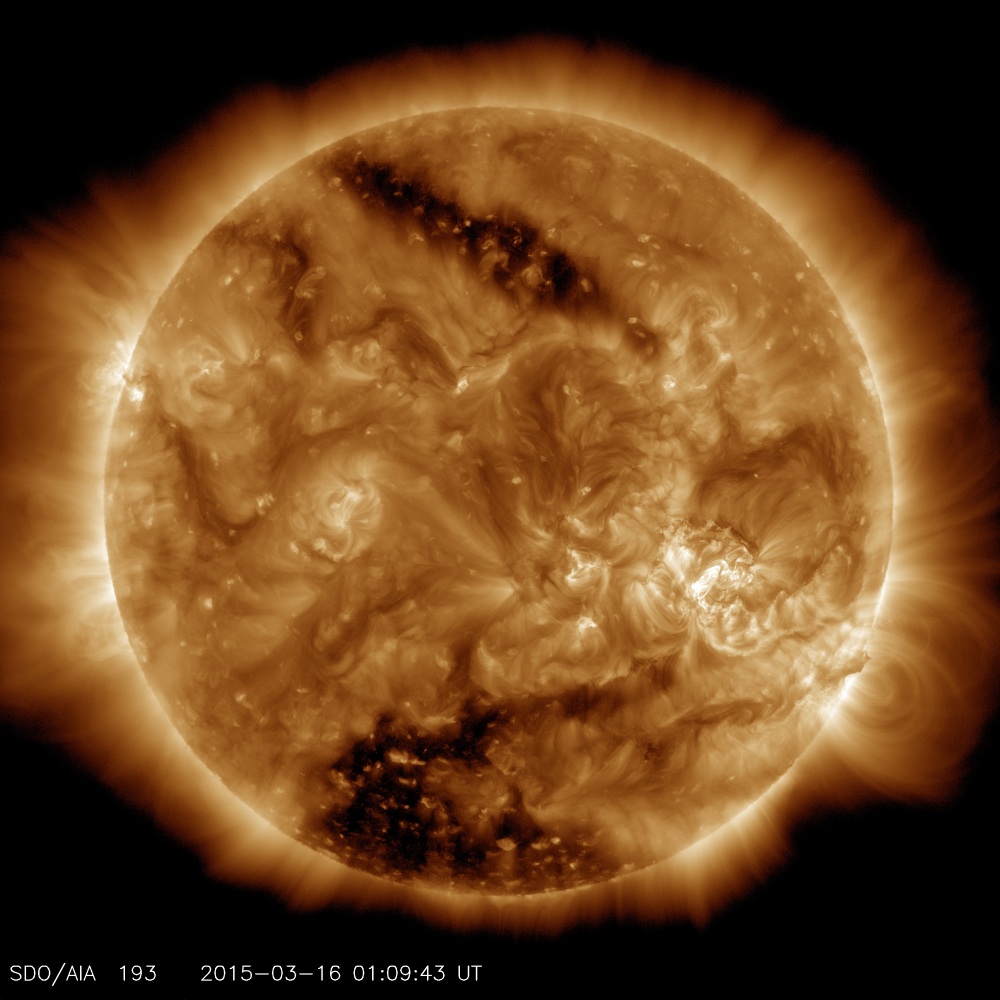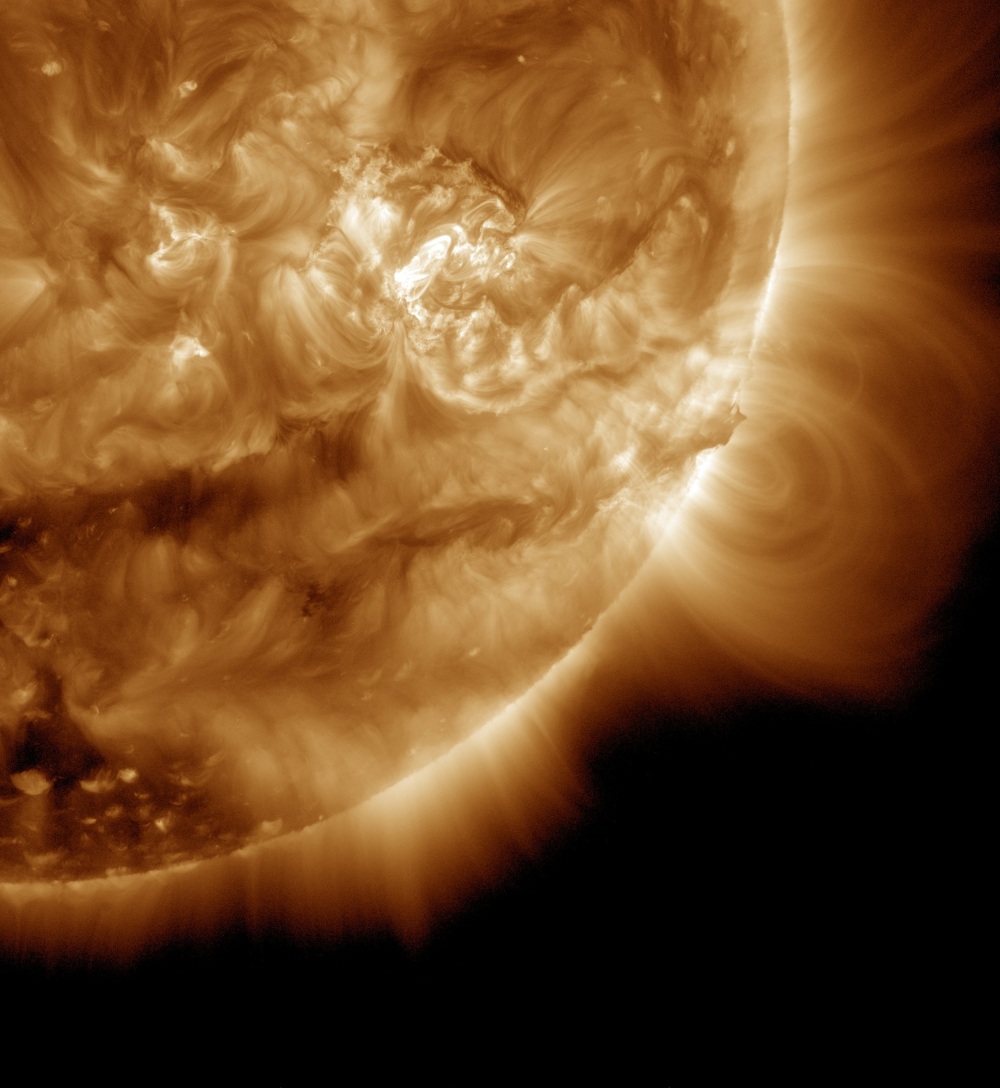
You’ll note in the image above that there are two dark patches on the sun’s surface. These spots are referred to as coronal holes — they’re lower density and temperature regions of the sun’s corona, or outer atmosphere.
What’s particularly fascinating about this observation is the size of the holes. The larger of the two, near the southern pole, covers an estimated 6- to 8-percent of the sun’s total surface. That might not sound terribly large, but it actually makes it one of the largest polar holes scientists have observed in decades.
The smaller hole, near the opposite pole, is long and narrow. Estimates have its total size covering some 3.8-billion square miles of the sun, which is equal to about 0.16-percent of the solar surface.
Worth noting about coronal holes is that the magnetic field in these regions extends pretty far out into space, as opposed to quickly looping back into the sun’s surface. In terms of their effect on our planet, coronal holes can be a source of fast solar wind of particles that envelop the Earth.
For visual reference, the magnetic fields that loop up and down to the sun’s surface can be seen as arcs in the non-coronal hole region of the image (below is a screenshot of the lower right region).

From an electronics and technological standpoint, this image was captured by NASA’s Solar Dynamics Observatory (SDO), which was developed at the Agency’s Goddard Space Flight Center in Greenbelt, Maryland, and launched February 2010, from Cape Canaveral Air Force Station.
The SDO is a 3-axis stabilized spacecraft, with two solar arrays, two high-gain antennas, and three instruments: the Extreme Ultraviolet Variability Experiment, the Helioseismic and Magnetic Imager, and the Atmospheric Imaging Assembly.
In terms of what each one does, note the following (very) short explanations:
The Helioseismic and Magnetic Imager studies solar variability and characterizes the Sun's interior and various components of magnetic activity.
The Extreme Ultraviolet Variability Experiment measures the Sun's extreme ultraviolet irradiance with high-quality spectral resolution, “temporal cadence”, accuracy, and precision over preceding measurements made by TIMED SEE, SOHO, and SORCE XPS.
The Atmospheric Imaging Assembly provides continuous full-disk observations of the solar chromosphere and corona in seven extreme ultraviolet channels, ranging in temperature from about 20,000 Kelvin to more than 20 million Kelvin.
You can learn more about the image and observatory by visiting NASA.gov
Advertisement
Learn more about Electronic Products Magazine





